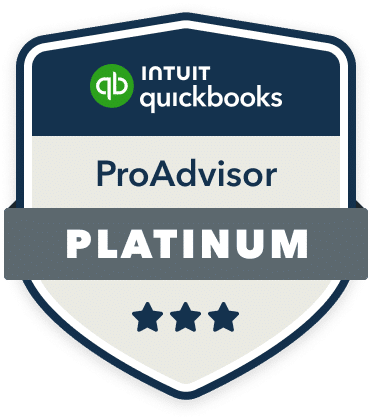As we dive into 2025, it’s time to focus on the numbers that truly matter for your business. Tracking the right Key Performance Indicators (KPIs) helps you stay aligned with your goals, spot opportunities, and make data-driven decisions.

Here are some basic small business KPIs to watch this year, with examples to help you apply them:
Revenue Growth
Revenue growth is a critical KPI and indicator of your business’s ability to expand its customer base and increase sales over time. It reflects how well your company is performing in attracting and retaining clients, launching new products, or entering new markets. For example, if your revenue was $50,000 in the last quarter and increased to $55,000 this quarter, that’s a 10% growth rate. This growth signals that your business strategies—such as marketing efforts, sales initiatives, or pricing adjustments—are effectively driving results. Monitoring revenue growth regularly helps you identify trends, spot potential challenges early, and make informed decisions to sustain upward momentum.
Net Profit Margin
Net profit margin provides a clear picture of how efficiently your business is managing its income and expenses. This KPI is calculated by dividing net profit (revenue minus expenses) by total revenue, giving you a percentage that represents profitability. For instance, if your business earned $100,000 in revenue and your expenses totaled $80,000, your profit margin would be 20%. This means 20% of every dollar earned is retained as profit. Understanding this metric helps you assess operational efficiency and guides decisions on cost management and pricing strategies to enhance profitability.
Customer Acquisition Cost (CAC)
Customer Acquisition Cost (CAC) measures how much you’re spending to gain each new customer. It’s a critical metric for assessing the efficiency of your marketing and sales efforts. For example, if you spend $1,000 on marketing campaigns and gain 10 new customers, your CAC is $100 per customer. A lower CAC indicates more efficient spending, while a high CAC may signal the need to refine marketing strategies or focus on retaining customers. By tracking CAC as a KPI, you can better allocate resources to maximize ROI and align your efforts with your business’s growth goals.
Customer Retention Rate
Customer retention rate reflects how well you’re maintaining relationships with your existing customers. Retaining customers is typically more cost-effective than acquiring new ones, making this metric vital to long-term success. For example, if you started the year with 100 customers and retained 90 of them by the end, your retention rate is 90%. A high retention rate suggests strong customer satisfaction and loyalty, which can translate into consistent revenue streams. Analyzing retention trends helps identify areas for improvement in customer experience and informs loyalty programs or personalized engagement strategies.
Accounts Receivable Turnover
Accounts receivable turnover is a measure of how efficiently your business collects payments from customers who buy on credit. It’s calculated by dividing total credit sales by the average accounts receivable. For instance, if your annual credit sales are $120,000 and your average accounts receivable is $20,000, your turnover rate is 6, meaning you collect payments every two months. A high turnover rate indicates that your collection processes are effective, while a low rate may point to issues such as slow-paying customers or inefficiencies in invoicing. Regularly monitoring this metric helps ensure your cash flow remains healthy.
Operating Cash Flow
Operating cash flow reveals whether your business generates enough cash from its core operations to sustain day-to-day activities. It’s the difference between cash inflows (from sales and other income) and outflows (such as expenses and supplier payments). For example, if your inflows total $50,000 and your outflows are $30,000, your operating cash flow is $20,000—positive and healthy. Positive cash flow enables you to invest in growth opportunities, pay off debts, and build financial stability. Monitoring this metric ensures you’re not relying too heavily on external financing to keep the business running.
Inventory Turnover
Inventory turnover measures how efficiently you’re managing stock and converting it into sales. It’s calculated by dividing the cost of goods sold (COGS) by the average inventory value. For example, if you sold $10,000 worth of inventory and your average stock value is $2,000, your turnover rate is 5, meaning you’re selling and replenishing your inventory five times per period. High turnover often indicates strong sales and efficient inventory management, while a low turnover could mean overstocking or slow-moving products. Understanding this KPI metric helps optimize inventory levels, reduce carrying costs, and improve cash flow.
These metrics provide a clear snapshot of your business health and help you plan for sustainable growth.
Your business numbers don’t have to be a mystery, let’s make them work for you in 2025 with our help!
If you have any questions or need additional assistance, don’t hesitate to reach out to us. We’re here to help you meet the new regulatory requirements with confidence.




